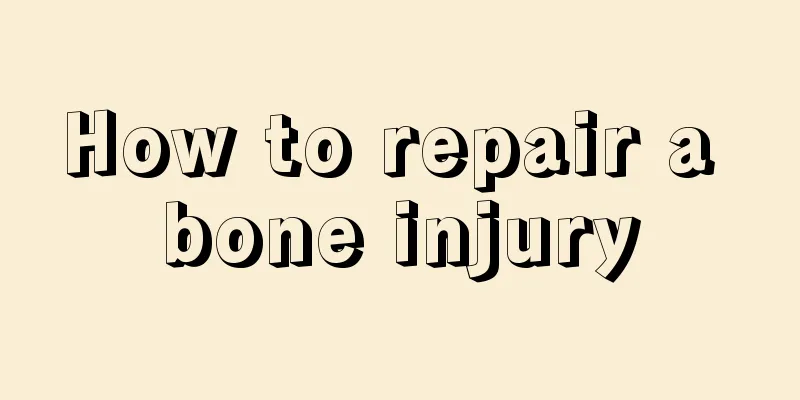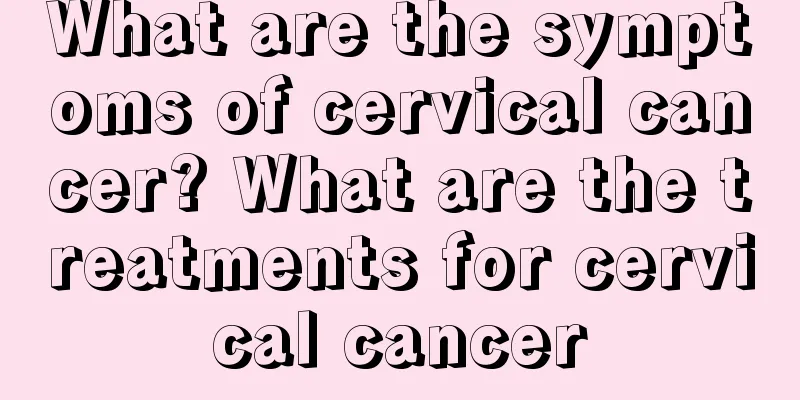What to do if there are capillaries on the legs

|
Some people find some capillaries on their legs and start to worry and suspect that they have some disease. In fact, this worry is sometimes unnecessary. Generally, everyone has some small, inconspicuous capillaries in their legs. You can ignore them unless the capillaries are particularly obvious. In this case, we should pay great attention to them and seek medical attention for diagnosis in time to avoid delaying the disease. 1. Causes 1. Due to the influence of gravity when standing, blood vessels dilate more severely. 2. Some people's capillaries are obviously caused by varicose veins. 2. Symptoms and hazards 1. Varicose veins usually appear as raised, blue, cord-like veins under the skin. They can appear anywhere on the body but often affect the legs and feet. Visible swollen and twisted veins with patches of capillary bleeding around them (called spider veins) are seen in superficial varicose veins. Although the blood vessels are painful and deformed, they are usually harmless. 2. When infected, tenderness occurs and blood circulation is impaired, resulting in swelling of the ankle, itching of the skin, and pain in the infected limb. In addition to the surface venous network, the legs have an internal or deep venous network. Rarely, internal leg varicose veins occur. These deep veins are usually not visible but often cause swelling or pain throughout the leg. Deep varicose veins are often sites of blood clot formation. Deep vein infection or thrombophlebitis in the thigh or pelvis can cause pulmonary embolism, a disease with a high mortality rate. 3. Diagnosis You can make the diagnosis by going to the hospital for lower limb venous angiography or color Doppler ultrasound. IV. Treatment 1. Mild varicose veins do not require medical supervision and treatment: Basic home treatments and other treatments can relieve the discomfort caused by varicose veins. 2. For capillary dilation caused by excessive standing on your legs, you should pay attention to rest. Do not stand for a long time. Raise your lower limbs 30 to 40 degrees when resting to facilitate venous and lymphatic return. Apply pressure bandage if necessary. Avoid standing or sitting for long periods of time , you can wear elastic stockings to reduce vascular tension and relieve symptoms. 3. Physical therapy Regular massage can significantly reduce the discomfort caused by varicose veins. A qualified masseuse will start with the feet, work your way up the legs to the wrists, and move your congested tissues along the lymphatic system. Other therapies such as reflexology and acupressure can also be helpful in alleviating varicose vein symptoms. 4. Spinal massage therapy To treat varicose veins, chiropractic care should be combined with diet and lifestyle and physical therapy for the skeletal system. For example, therapies that relieve pelvic tension can improve the circulation of blood and other fluids. 5. Hydrotherapy Running cold water over your legs can relieve pain from superficial varicose veins. Hot or cold baths can also slow the development of varicose veins in the feet and ankles. Soak your feet in warm water for 1 to 2 minutes, then in cold water for half a minute, and then alternate for 15 minutes. You can also add aromatic oils to the water. 6. Lifestyle Maintaining your nutrition and overall physical health is the most basic strategy for preventing varicose veins from developing. A total of 30 minutes of aerobic exercise a few times a week can keep you from losing weight while nourishing and strengthening your veins. You can jog, swim, or ride a bike in the morning. In addition, when you sleep, gently raise your feet to promote blood circulation in your feet and relieve venous pressure. 5. Prevention 1. Pay attention to resting your legs and avoid standing for long periods of time. 2. Cycling, walking and swimming can help strengthen the calf muscles and prevent vasodilation. |
<<: The veins on my body are becoming more and more obvious. What's going on?
>>: The reason why veins on the feet bulge
Recommend
Preventive measures for cervical cancer
Among the many gynecological diseases in women, c...
The internal organs corresponding to the index finger of the left foot
People say that the fingers of the human body are...
What tests are needed for lung cancer? Hospitals often use 3 methods to diagnose lung cancer
Bad habits can easily lead to diseases, such as s...
What tests can be done to detect early lung cancer? Three tests are necessary to detect early lung cancer
When lung cancer is in the early stages of the lu...
What are the treatment principles for primary liver cancer? Five treatment principles for primary liver cancer
Life is spent with diseases big and small. Primar...
What to do with hematuria in late stage of bladder cancer? Introduction to specific treatments for late stage of bladder cancer
There are several possibilities for bleeding from...
Will myopia increase the more I wear glasses?
Some people in life have myopia, but they are unw...
What are the complications of rectal cancer
In recent years, the incidence of digestive tract...
What to do if there is too much dust in the bedroom?
Dust is actually everywhere in the environment we...
Steps to treat flat warts with figs
I believe that people are not unfamiliar with fla...
How much does lung cancer surgery cost? It’s different for everyone
Lung cancer is a very common tumor disease in cli...
Can a lung puncture heal?
Lung puncture is quite scary for many people. Som...
What are the symptoms of prostatic gastritis
The pace of life and work in today's society ...
I've been having a lot of bad luck lately. What should I do?
In life, there are many people who have bad luck ...
What causes chest bone spur pain? Chest bone spur pain, causes, triggers
The middle of the human chest is the costal carti...









